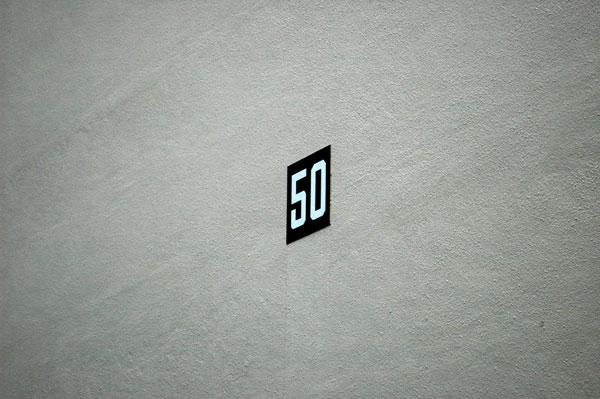Oz strategists: 50 years of SDSC
Posted By Graeme Dobell on October 24, 2016 @ 06:00

Australia this year marked the 50th anniversary of three events that still influence the way we think about strategy and defence. Two of these 1966 events were US alliance biggies:
- The political and military embrace of the Vietnam War, enthusiastically endorsed by Australian voters.
- The start of what became one of the largest US satellite ground stations in the world, Pine Gap [1], near Alice Springs.
The third 1966 moment was the birth of an academic minnow that became a big fish: the Strategic and Defence Studies Centre (SDSC) at the Australian National University.
Vietnam and Pine Gap expressed Australia’s strategic vision 50 years ago: passionate embrace of the US alliance linked to profound uncertainty about Asia. Becoming Prime Minister in 1966, Harold Holt made Vietnam a central policy of his leadership and his triumph in that year’s Federal election.
Holt’s khaki-tinged Vietnam-vote-victory exemplifies the truth that leaders committing foreign policy blunders usually take the voters with them on the initial leap. Come the crash, the people shift and all blame lands on the leader. Vietnam and its aftermath shaped SDSC. And in the post-Vietnam era, SDSC slowly tore away the taboos surrounding Pine Gap.
The Vietnam tragedy didn’t do much for the status of strategic studies at the ANU. Scholars ‘dedicated to the analysis of the use of armed force in its political context’ faced student scorn and academic animosity. Yet the profound rethink Australia confronted after Vietnam made SDSC an academic think tank that mattered in Canberra. As the Oz polity grappled with what Defence of Australia would mean, SDSC did the detail and the big picture. Cometh the hour, cometh the Centre.
What SDSC offered was the ability to think deeply but not take direction about the conclusion. In Canberra, that’s still rarer than it should be.
A key mind in making the Centre, Des Ball, wrote [2] of its
‘freedom to think and write independently, critically and objectively, untrammelled by prevailing government policies or bureaucratic interests. Strategic and defence issues are among the most vital issues of public policy; defence capabilities are also enormously expensive. They warrant intensive and rigorous scrutiny and informed public debate, at least as much as health, economic, welfare, environmental or other national issues.’
Amen to that, except this calling is for the tough, not the pious. Doing independent criticism of government, bureaucracy and military—vital choices costing billions—is to stand close to where the lightning strikes.
The toughness and smarts marked Des Ball’s intellectual marathon to unveil the role of Pine Gap. The academic detective work mattered for Oz, as Richard Tanter [3] wrote:
‘Desmond Ball’s labours through four decades to elucidate the character of United States defence and intelligence facilities in Australia, to document the evidence, test the balance of benefits and dangers to both national security and human security, and then tell the story to his fellow Australians is unparalleled in Australian intellectual and political life.’
SDSC’s history—standing close to the lightning while producing the goods—drew the Defence Minister, Marise Payne, to launch ‘A National Asset’ [2], tracing the Centre’s 50 years. Senator Payne paid tribute to an unusual institution with an unusual role—a policy think tank inside a university. As Hugh White muses, this is a Janus role, looking to the world of scholarship and to the world of policy and public debate. The Janus has a split personality, according to Paul Dibb, who stresses ‘the void between policy-relevant work and “pure academic work”.’
Policy and purity seldom mix. Living simultaneously in two worlds can be wrenching. While SDSC had policy foes, the deadliest enemies sat within the ANU. Others in the Coombs Building were caustic about the bomb fondlers and bayonet strokers, arguing they didn’t belong in a university—off to a military staff college with ‘em! This was realists versus theorists conducted as budget warfare.
When SDSC fled the grounds of the ANU in the 1990s to reside in an old building near the lake, it was as though it’d been ejected from the university tribe to be culled or die of exposure.
SDSC risked the same fatal fall as another university think tank only a few kilometres away, the Australian Defence Studies Centre at the Australian Defence Force Academy, run by the University of New South Wales. So complete was this destruction, UNSW sowed the fields with salt, erasing the Defence Studies Centre’s digital existence (the digital ghosts roam only in the National Library’s electronic memory).
Now safely back in the ANU’s heart, SDSC can celebrate 50 years because it obeyed the first institutional law—it survived. And thrived. The traditions were made by big names like Robert O’Neill, Des Ball, Paul Dibb and Hugh White. Academic values and freedom from government direction or commercial pressure are wonderful assets, but purity must serve purpose. SDSC built its legend by getting dirt on its escutcheon, going out into the hard lands beyond the university. As in the first 50 years, the future job isn’t just to teach strategy and history, but to shape it. Tough times can be good times for think tanks, especially one with Janus juice.
Article printed from The Strategist: https://aspistrategist.ru
URL to article: /oz-strategists-50-years-sdsc/
URLs in this post:
[1] Pine Gap: http://www.news.com.au/technology/innovation/pine-gap-spy-base-alice-springs-what-you-never-knew-about-topsecret-facility/news-story/b684b7e9ea355860379e50498f236486
[2] wrote: http://press-files.anu.edu.au/downloads/press/n2051/pdf/book.pdf?referer=2051
[3] Richard Tanter: http://nautilus.org/napsnet/napsnet-special-reports/the-joint-facilities-revisited-desmond-ball-democratic-debate-on-security-and-the-human-interest/
Click here to print.